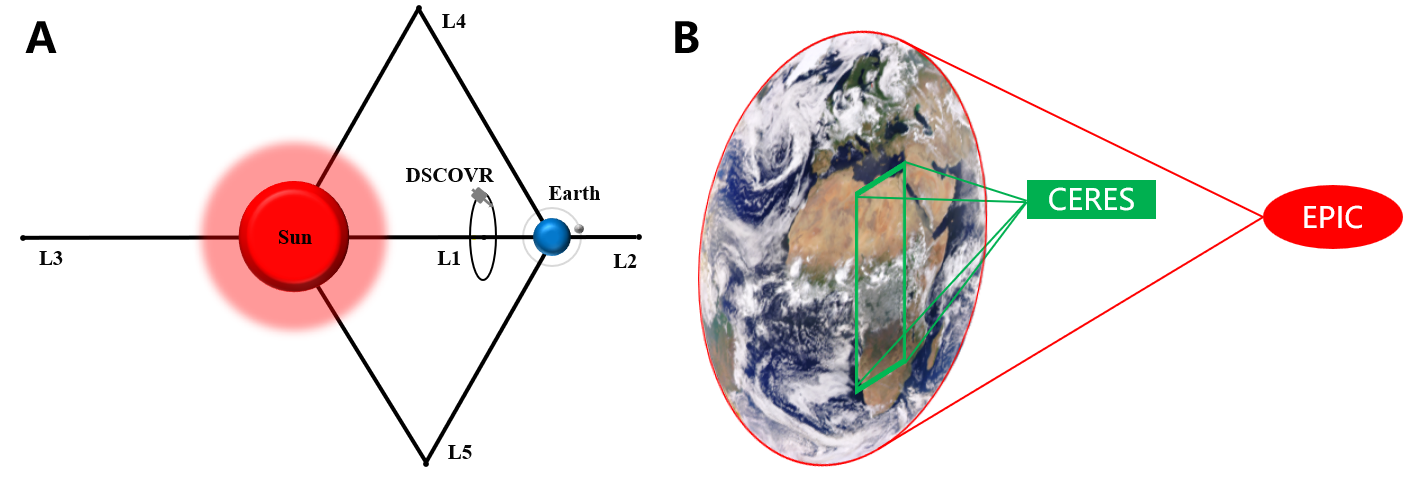On July 2, 2025, Liu Huizeng's group published a research paper entitled "Monitoring the Global TOA Shortwave Radiation Flux with Deep Space-based Earth Observations" in the Journal of Remote Sensing, a top-tier journal. The first author of the paper is Yuchen Zhao, a master's student at the Institute for Advanced Study, and the corresponding author is Huizeng Liu. Shenzhen University is the primary affiliated institution. Co-authors include Academician Qingquan Li and Professor Ping Zhu of Shenzhen University, Researcher Hong Qiu from the National Satellite Meteorological Center, as well as undergraduate student Tianye Cao and master's students Siying Chen and Yan Ma from Shenzhen University.
Earth's radiation budget is the fundamental driver of the climate system, describing the balance between incoming solar radiation and the energy that is reflected and radiated back into space. Moon and deep space-based Earth observation platforms offer a unique vantage point for large-scale, long-term, and stable monitoring of our planet. Shenzhen University is currently leading the development of the world's first Moon-based Dual-channel Earth Radiation Spectrometer, which will be deployed on the Chang'e-7 mission to observe Earth's radiation budget. The Deep Space Climate Observatory (DSCOVR) satellite, positioned at the Sun-Earth Lagrange L1 point, and its Earth Polychromatic Imaging Camera (EPIC), provide unprecedented, high-frequency monitoring of the entire sunlit face of the Earth from a distance of approximately 1.6 million kilometers.
However, a key challenge in interpreting deep-space Earth radiation data is the conversion of observed radiance into radiation flux. This process traditionally relies on complex Angular Distribution Models (ADMs) to correct for the anisotropic nature of radiation. Currently, no dedicated ADMs exist for DSCOVR/EPIC, and the complexity of developing and applying such models has limited the analysis and application of deep-space observation data. Furthermore, the full potential of deep-space observations for global radiation energy monitoring remains to be clarified.
To address this challenge, Liu's research group has proposed an innovative, AI-based method for retrieving the Top-of-Atmosphere (TOA) shortwave radiation flux from deep-space observations. The study further explores the capability of these observations for monitoring global shortwave radiation flux. The results demonstrate that the radiation flux estimated by this new method shows a high degree of spatial consistency with the CERES products across various spatiotemporal scales. The model's accuracy generally surpasses that of the official albedo products provided by the DSCOVR/EPIC team. Moreover, the EPIC-derived radiation flux accurately captures the variations in the global daily mean TOA shortwave radiation, showcasing the immense potential of a single deep-space satellite for monitoring the global-scale radiation balance.
This research provides a methodology that can potentially be extended to Moon-based Earth observations, offering a valuable reference for interpreting data from the upcoming Chang'e-7 Dual-channel Earth Radiation Spectrometer. Ultimately, this work will contribute to providing more reliable data support for global climate change research and addressing environmental challenges.

Figure 1. Schematic diagram of the DSCOVR satellite observing Earth from the Sun-Earth L1 point.

Figure 2. Comparison of DSCOVR EPIC true-color imagery, the model-retrieved shortwave radiation flux, and existing products.
This research was supported by the National Natural Science Foundation of China, the Guangdong Basic and Applied Basic Research Foundation, and the Shenzhen Science and Technology Program.
Paper Information:
Yuchen Zhao, Huizeng Liu*, Ping Zhu, Hong Qiu, Tianye Cao, Siying Chen, Yan Ma, & Qingquan Li. Monitoring the Global TOA Shortwave Radiation Flux with Deep Space-based Earth Observations. Journal of Remote Sensing, 2025, 5, 0373. https://doi.org/10.34133/remotesensing.0373


